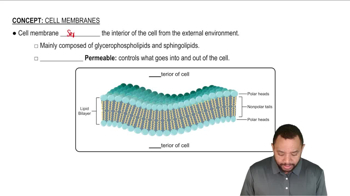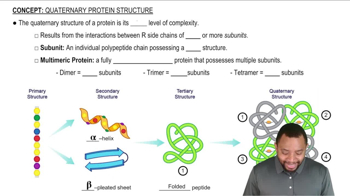Is serine chiral? Draw serine and identify the chiral atom. Explain why serine is chiral.
A family visits a pediatrician with their sick child. The four-month-old baby is pale, has obvious episodes of pain, and is not thriving. The doctor orders a series of blood tests, including a test for hemoglobin types. The results show that the infant is not only anemic but that the anemia is due to sickle-cell anemia. The family wants to know if their other two children have sickle-cell anemia, sickle-cell trait, or no sickle-cell gene at all.
a. What test will be used?
 Verified step by step guidance
Verified step by step guidance
Verified Solution
Key Concepts
Sickle-Cell Anemia

Hemoglobin Electrophoresis

Genetic Inheritance Patterns

Four of the most abundant amino acids in proteins are leucine, alanine, glycine, and valine. What do these amino acids have in common? Would you expect these amino acids to be found on the interior or on the exterior of the protein?
Globular proteins are water-soluble, whereas fibrous proteins are insoluble in water. Indicate whether you expect the following amino acids to be on the surface of a globular protein or on the surface of a fibrous protein.
a. Ala
Which of the following amino acids is most likely to be found on the outside of a soluble protein, and which of them is more likely to be found on the inside? Explain each answer. (Hint: Consider the effect of the amino acid side chain in each case and that the protein is folded up into its globular form.)
a. Valine
List the amino acids with side chains that are capable of hydrogen bonding. Draw an example of two of these amino acids hydrogen bonding to one another. For each one, draw a hydrogen bond to water in a separate sketch. Refer to Section 8.2 for help with drawing hydrogen bonds.
Valine is an amino acid with a nonpolar side chain, and serine is an amino acid with a polar side chain. Draw the two dipeptides that can be formed by these two amino acids. Identify the peptide bond.
